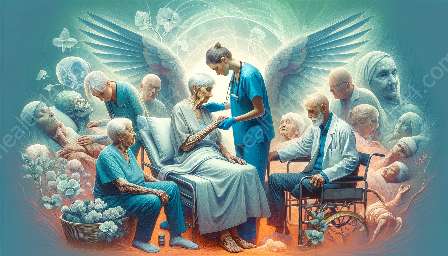Geriatric syndromes pose unique clinical challenges due to their multifactorial nature and complex pathophysiology. This topic cluster provides an in-depth exploration of the clinical manifestations and pathophysiological mechanisms associated with geriatric syndromes in the context of geriatrics and aging. Understanding these intricate conditions is crucial for providing tailored care and improving the quality of life for elderly individuals.
Glossary of Geriatric Syndromes
Geriatric syndromes encompass a range of conditions that are prevalent in older adults, characterized by their multifaceted nature and diverse clinical manifestations. Common geriatric syndromes include delirium, falls, urinary incontinence, frailty, dementia, and functional decline. These syndromes often overlap and interact, contributing to the complexity of diagnosing and managing geriatric care.
Clinical Manifestations of Geriatric Syndromes
The clinical presentations of geriatric syndromes are often subtle and multifactorial, requiring a holistic assessment of the individual's physical, cognitive, and psychosocial functioning. For instance, delirium may manifest as acute changes in consciousness, attention, and cognition, while falls can result in musculoskeletal injuries and diminished mobility. Furthermore, urinary incontinence and frailty may lead to decreased functional independence and compromised quality of life.
Moreover, geriatric syndromes such as dementia pose significant challenges as they manifest through cognitive decline, behavioral changes, and functional impairment, impacting various aspects of daily living. Recognizing these diverse clinical manifestations is essential for early detection and effective management of geriatric syndromes.
Pathophysiology of Geriatric Syndromes
The pathophysiological mechanisms underpinning geriatric syndromes are complex and multifaceted, often involving interplay between physiological, psychological, and environmental factors. Delirium, for example, is associated with disruptions in neurotransmitter function, inflammatory responses, and metabolic disturbances, leading to acute alterations in cognitive function.
Falls, a common geriatric syndrome, are influenced by age-related musculoskeletal changes, sensory impairments, and environmental hazards, contributing to an increased risk of injury. Understanding the intricate pathophysiological pathways associated with geriatric syndromes is crucial for implementing targeted interventions and preventive strategies.
Frailty, characterized by decreased physiological reserve and increased vulnerability to stressors, involves complex interactions between inflammatory processes, hormonal changes, and decline in muscle mass and strength. Similarly, the pathophysiology of urinary incontinence encompasses neurological, musculoskeletal, and psychological components, highlighting the multifactorial nature of geriatric syndromes.
Interplay with Geriatrics and Aging
Geriatric syndromes exemplify the unique intersection between geriatrics and aging, highlighting the importance of specialized care for older adults. The interplay between the aging process and the development of geriatric syndromes underscores the need for comprehensive geriatric assessments, personalized care plans, and multidisciplinary interventions.
Furthermore, understanding the pathophysiological underpinnings of geriatric syndromes within the context of aging allows for targeted interventions to mitigate the impact of these conditions on older individuals. By integrating geriatric syndromes into the broader framework of geriatrics, healthcare professionals can enhance the quality of care and promote successful aging for elderly individuals.
Conclusion
Geriatric syndromes represent a complex and multifaceted spectrum of conditions that significantly impact the health and well-being of older adults. The comprehensive understanding of their clinical manifestations and pathophysiological mechanisms is essential for providing holistic care and implementing effective interventions. By recognizing the interplay between geriatrics, aging, and geriatric syndromes, healthcare practitioners can tailor their approach to meet the unique needs of elderly individuals, ultimately contributing to improved outcomes and enhanced quality of life.


